The house’s deck is where we bask in the sun, host epic BBQ parties, and maybe even stargaze! That’s why we want its makeover to be as beautiful and vibrant as the memories it hosts.
The million-dollar question, though, is: should you use deck paint or stain? It’s a hard decision between a big burst of color and letting nature’s beauty shine through.
In this guide, we’ll help you choose which finish would work best for your space. We’ll discuss the advantages and disadvantages of deck paint and stain to make decision-making easier for you and your family.
Which Is Better: Deck Paint or Stain?
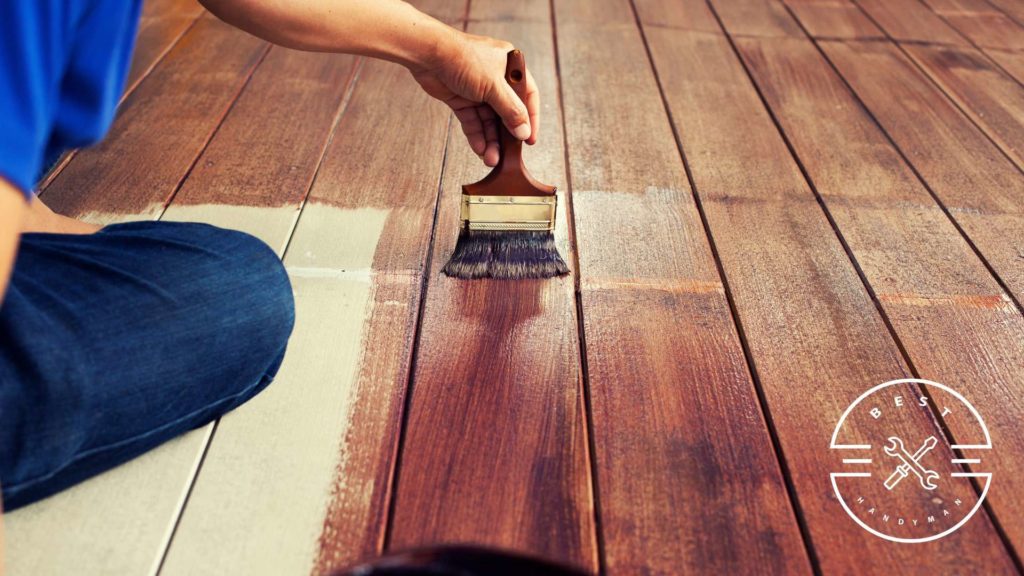
The choice between deck paint and stain depends on your specific needs and preferences. There’s no one-size-fits-all answer since they have their own advantages and disadvantages.
Here’s a general guideline that you can follow when choosing whether deck paint or stain is better for you:
Choose deck paint if
- Durability is your priority
- You want a modern look on your deck
- You have children or pets that can stain the deck
- You don’t want to spend more time and money on maintenance
Choose stain paint if
- You want a natural woody look
- You want an easier DIY project
- You’re living with an elderly who may easily slip
- You’re tight on budget
Advantages and Disadvantages of Deck Paint
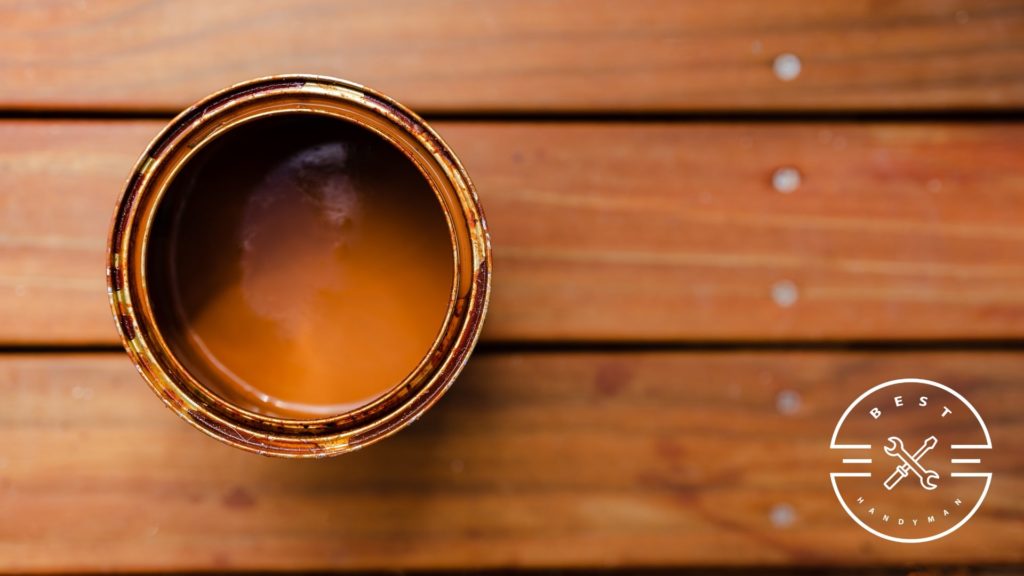
Advantages
- Long-lasting
- Offers protection from sun and moisture
- Covers imperfections on the wood
- Wide variety of color choices
- Easy to clean
Disadvantages
- Slippery
- Covers natural wood grain
- High cost
- Challenging to apply
- Hard to remove
Advantages
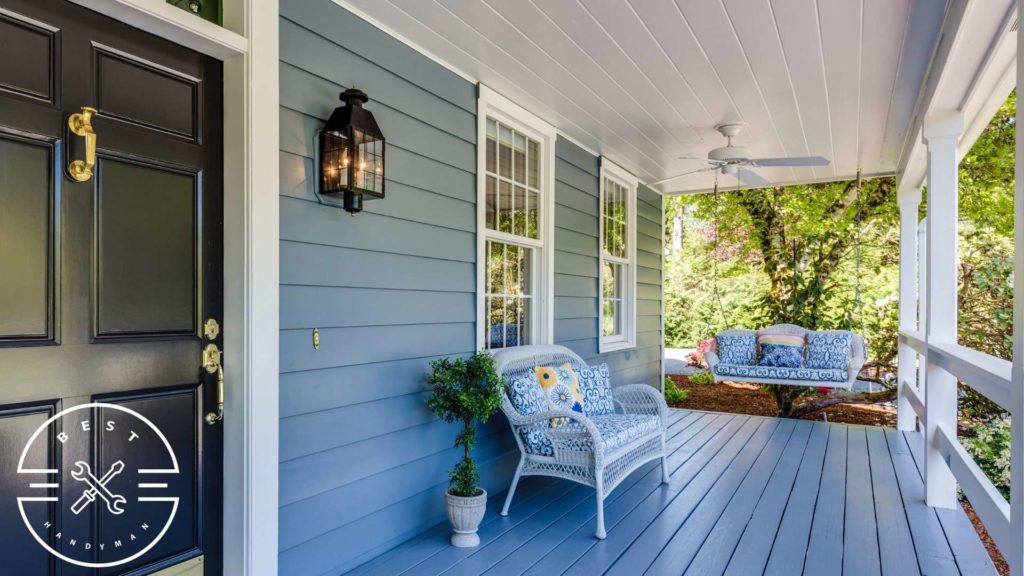
Long-Lasting
Paint is generally more resistant to abrasion and wear than stain. Even when applied in high-traffic areas, it wears down slower than a stained surface.
You may need to repair some cracks and peeling every now and then, but repainting is generally not needed until 10 years later if you use high-quality paint.
Offers Protection from Sun and Moisture
Paint forms a strong protective layer on the deck’s flooring, making it highly resistant to wear and tear, moisture, UV rays, and other weather conditions.
This barrier prevents moisture and UV rays from directly impacting the wood, which can lead to rot, decay, and deterioration.
Covers Imperfections on the Wood
Paint provides a sleeker and smoother look on the deck because it helps hide any imperfections or blemishes in the wood. Since it’s often applied in a thick layer, the paint will even out the deck and remove any sign of knot or blemish.
Wide Variety of Color Choices
Paint comes in various colors, giving you the freedom to choose one that matches your house’s exterior. These colors can turn a rather boring deck into an eye-catching feature of the house.
Easy to Clean
Paint is inherently resistant to stains like oil, food, or drinks, so it’s much easier to clean. Its surface is also smooth, so it’s easier to sweep and vacuum dust and dirt.
Disadvantages
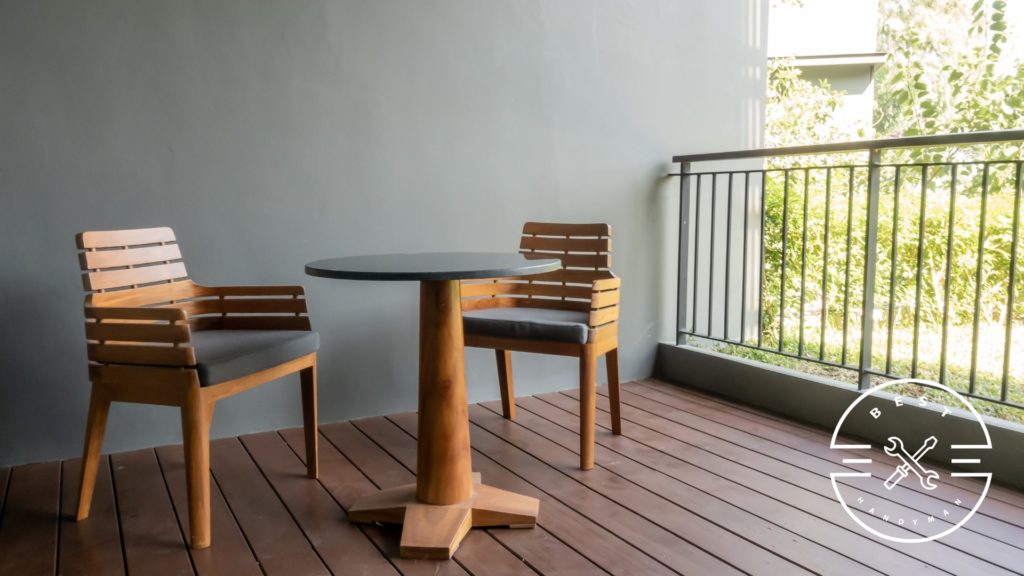
Slippery
A painted deck has a much smoother surface and a glossy finish, making it slippery even with just a bit of water. This can be dangerous if you have an elderly person at home or someone with a disability.
Covers Natural Wood Grain
Painting your deck will cover the natural wood grains of your deck, as it will be applied in a thick layer. This can be a deal-breaker if you want a woody aesthetic for your home.
High Cost
Painting a deck is usually a lot more expensive than staining because of the amount of work and material needed. Aside from the paint itself, you also have to buy a primer and a sealer.
You’ll also have to hire a painter if you can’t apply the paint on your own.
Challenging to Apply
To apply paint, you’ll have to prepare the deck thoroughly to ensure a smooth result. Preparation will include extensive cleaning, repair work, sanding, and priming.
You also can’t just apply paint however you want. You need to know the correct techniques to avoid streaks, lap marks, and uneven color.
Hard to Remove
Paint is usually hard to remove, so it’s pretty much permanent if you choose to paint your deck. Changing to staining will be almost impossible once you paint your deck.
Advantages and Disadvantages of Deck Stain
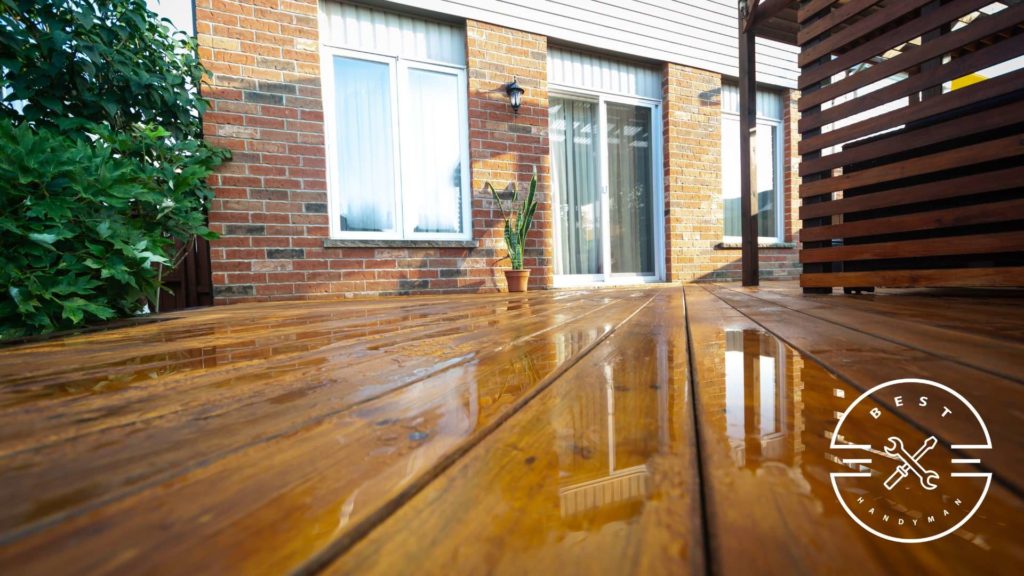
Advantages
- Natural appearance
- Easy to apply
- Less slippery
- Cost-effective
Disadvantages
- Limited protection from sun and moisture
- Doesn’t cover imperfections
- Doesn’t apply to all wood
- Doesn’t last as long as paint
- Limited color choices
Advantages
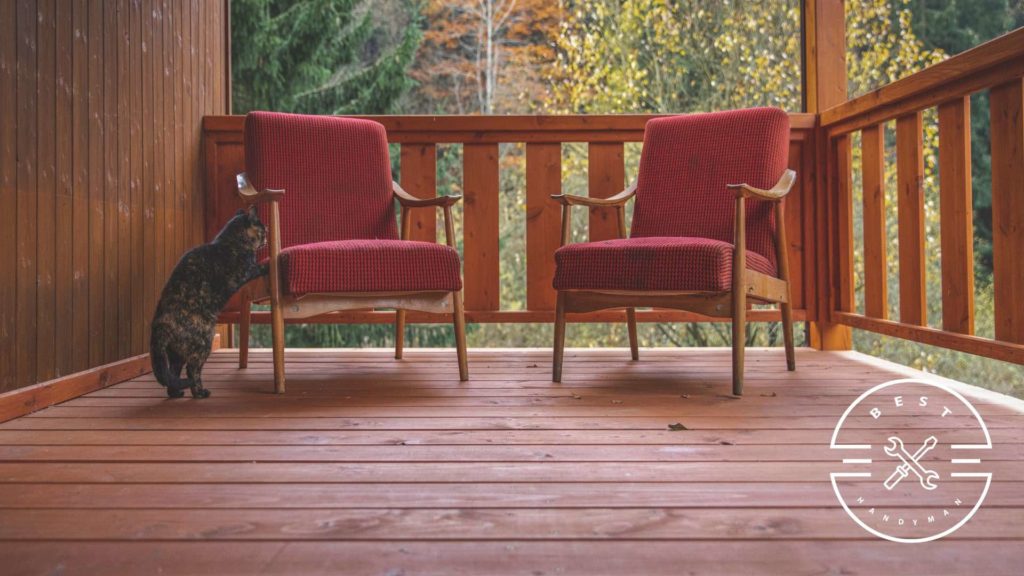
Natural Appearance
Stain enhances the wood grain and texture of the deck. It penetrates the wood to make its color and pattern pop more.
This makes deck stains better for those who want a natural and rustic look.
Easy to Apply
Staining doesn’t require extensive sanding or priming, unlike painting, so it’s relatively easier to do. Unlike when applying paint, you don’t have to worry about brush strokes or achieving a perfectly smooth finish.
Less Slippery
Stain doesn’t form a thick, smooth coating on the deck’s surface, unlike paint, so it retains the natural texture of the wood, which usually has a good amount of traction. Even when wet, a stained deck is typically not that slippery.
Cost-Effective
Staining the deck is usually more budget-friendly than painting it. Stain doesn’t need to be applied in a thick layer, so less product is typically used during staining.
It’s also a DIY-friendly project, as anyone can easily apply stains.
Disadvantages
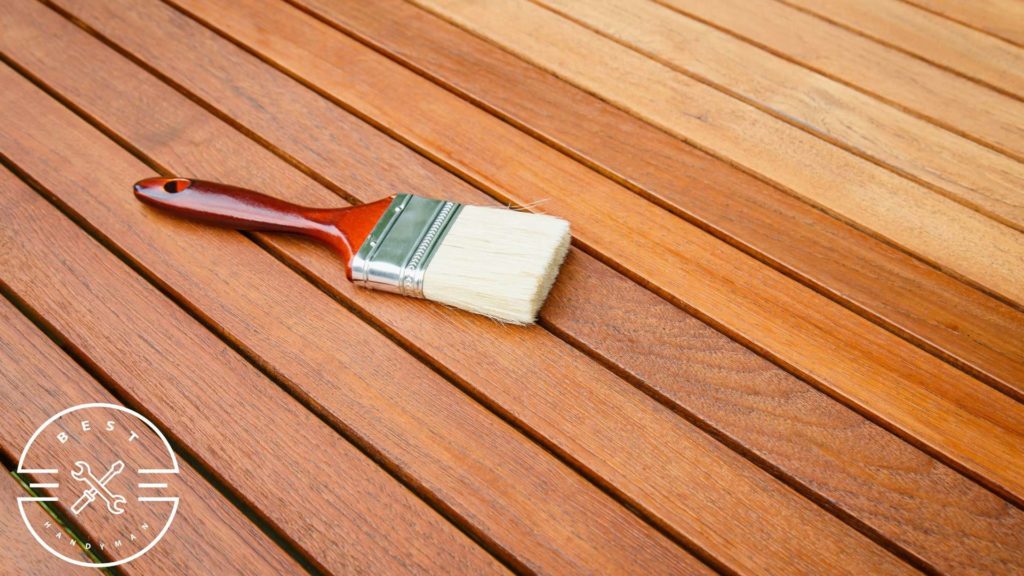
Limited Protection from Sun and Moisture
Stain provides limited protection from sun and moisture damage. It doesn’t form a barrier on the deck’s surface that can protect it from various weather conditions.
Doesn’t Cover Imperfections
Stains create a thin layer on the deck’s surface, as most of the stain penetrates the wood. There’s not enough buildup to hide imperfections like knots, cracks, and blemishes.
Stains are also designed to accentuate the wood’s natural features rather than hiding them.
Doesn’t Apply to All Wood
Some woods, like birch, maple pine, and poplar, may not be able to absorb stains as well as others. They have a tight grain structure, so it’s harder for the stain to penetrate.
Doesn’t Last as Long as Paint
Deck stain usually only lasts for three to five years since it has limited UV resistance. You’ll have to reapply it more than paint to maintain the wood’s appearance and provide more protection to the deck.
Limited Color Choices
Deck stains typically only come in earthy or natural tones, like brown, gray, beige, and green, since they’re only meant to enhance the wood’s natural appearance. If you’re a fan of bright colors, this might not be the perfect choice for you.




